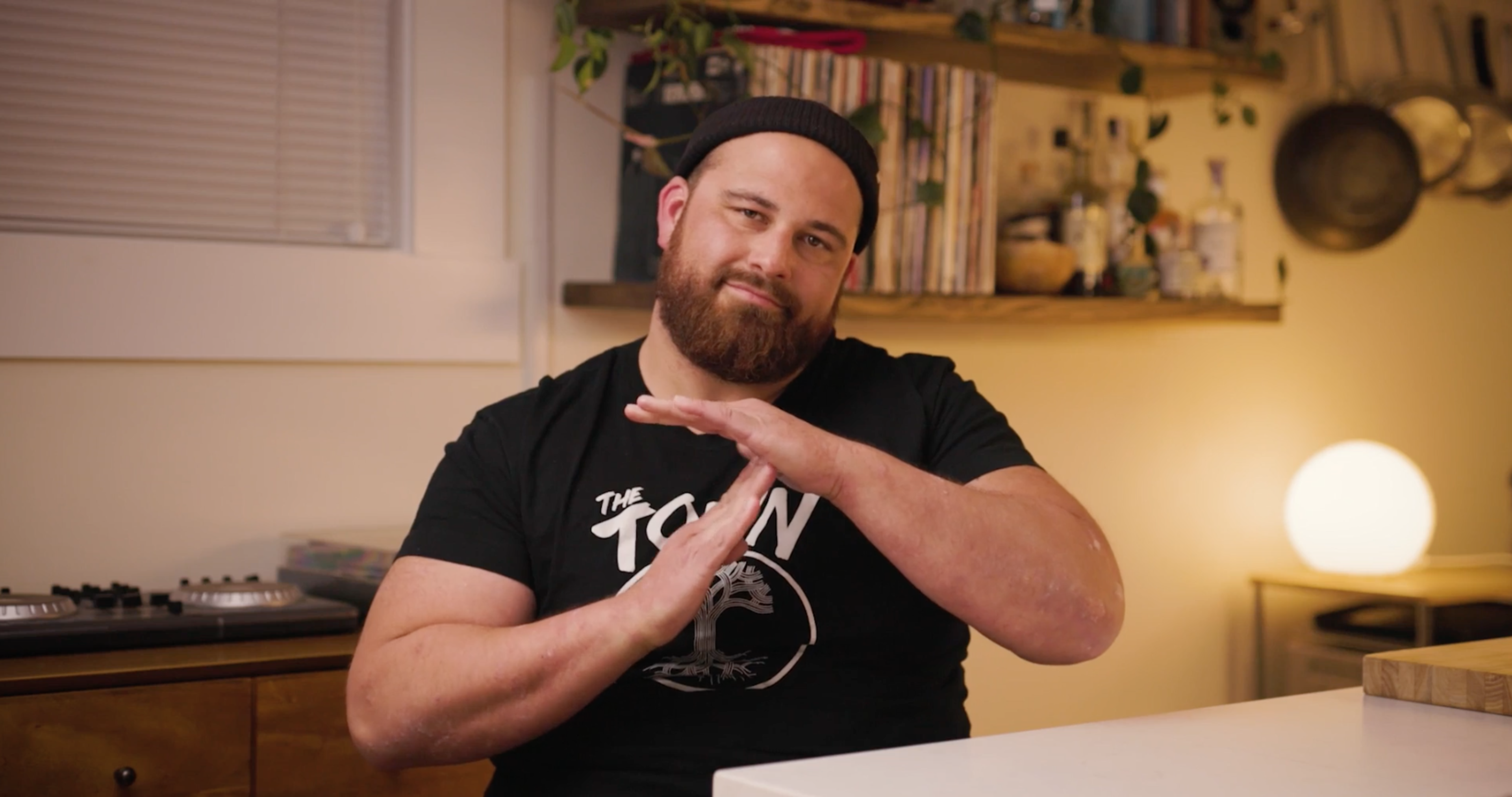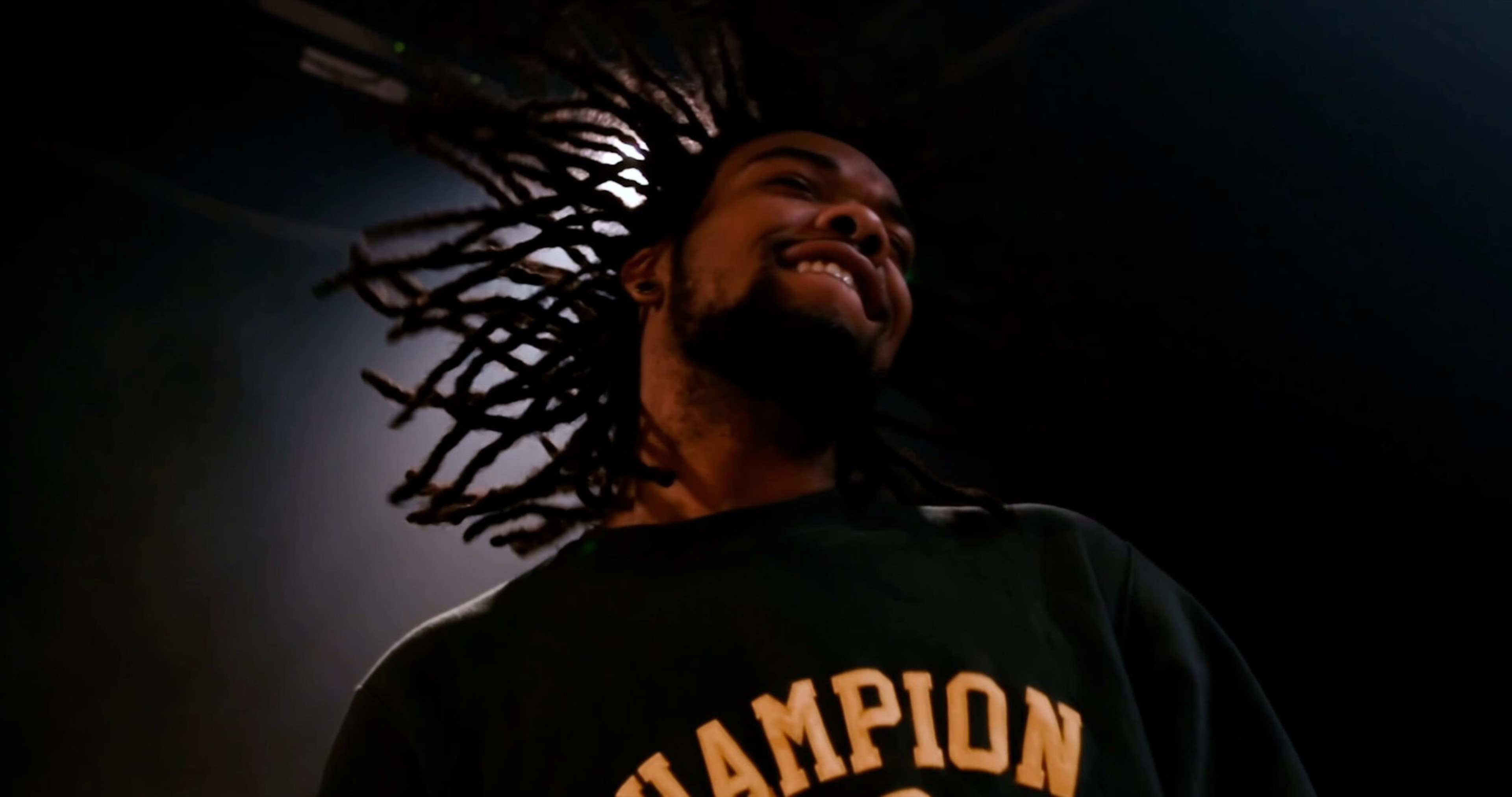Back in the early aughts, in the predawn of Web 2.0, an up-and-coming music producer could lay down a beat in their bedroom, and an aspiring rapper could track a killer hook in a converted closet. But when it came to distributing their creations, rising hip-hop artists still hawked CDs in liquor store parking lots and in the pulpy pages of local zines.
So it was with “Hyphy,” a Bay Area-born cultural movement centered around a very distinct hip-hop sound, which rose to regional prominence between the late-1990s and mid-2000s.
We Were Hyphy (opens in new tab), a new documentary by local filmmaker Larry Madrigal, traces the origins, evolution and legacy of the music, and its attendant culture—defining its contours through historical footage and present-day interviews with those who lived it.
“[Hyphy] gave us a home,” Rafael Casal, one of the documentary’s many interviewees, told The Standard. The poet, performer and actor joins a cast of recording artists, entrepreneurs and local historians in the documentary to deliver an oral history of Hyphy. The film premiered April 1 as part of the South Bay-based Cinequest Film Festival (opens in new tab).
For “Baydestrians” like Casal, the peak of Hyphy was a magical time for local hip-hop. The documentary’s subjects revel in the lingo and shared cultural touchstones: sideshows (opens in new tab), the Thizz Dance (opens in new tab), whistle tips (opens in new tab) and stunna shades (opens in new tab). Madrigal does his best to capture it all for an audience of insiders and newcomers alike.
The documentary opens on scenes of West Oakland, lingering on a mural of Mac Dre and slow motion footage of a black muscle car whipping donuts. “Hyphy is a lot of different things. But at it’s core, it’s music,” the film’s narrator Benjamin Earl Turner (opens in new tab) explains.
The regional subgenre—which the film succinctly describes as a sped-up and more eccentric version of Mobb Music (opens in new tab), itself an earlier, grittier genre of Bay Area hip-hop—culminated in a number of high-profile releases: “Super Sic Wit It (opens in new tab)” by Mistah Fab, “Super Hyphy (opens in new tab)” by Keak Da Sneak, “Feelin’ Myself (opens in new tab)” by Mac Dre and, of course, “Tell Me When To Go (opens in new tab),” by E-40.
However, as Madrigal illustrates over the course of his feature-length documentary, the culture of Hyphy extended beyond the minimalist 808 “Slap” pioneered by producers such as Rick Rock, Trackademicks, Droop-E and the late Traxamillion (opens in new tab).
We Were Hyphy highlights a wide array of voices who often aren’t given their due in conversations about Hyphy, despite their essential contributions to the scene.
D-Ray (opens in new tab), president of Thizz Nation and the preeminent photographer of Hyphy artists, did her part to bring the unique hip-hop culture of the Bay Area to a wider audience through her involvement with Ozone Magazine (opens in new tab). Sideshow Tone (opens in new tab), known as a savant of burning rubber, discusses the history of Oakland car culture and explains its appeal. Ice Cold 3000 (opens in new tab), a member of Bay Area dance group Turf Feinz (opens in new tab) describes the evolution of Turfin’—a loose set of ballet-esque maneuvers and double-jointed contortions, which served as a graceful and highly stylized counterpoint to the freewheeling and barely structured set of moves known as “Goin’ Dumb.”
In addition to interviewing those on the front lines of the scene, Madrigal also consults with the Sacramento State University scholar Dr. Andrea L. Moore (opens in new tab) and KQED journalist Pendarvis Harshaw (opens in new tab) for an academic view of Hyphy.
Madrigal said he’s hopeful that the documentary will remind people that the Bay Area has more to offer the world than the san serif fonts and bland brushed steel of Silicon Valley monoculture. “It felt like a good time to spotlight a homegrown thing that isn’t what everyone who comes here sees right now in the Bay,” he said.
Jason O’Mahony, the film’s producer, said what he ultimately took away from the experience of working on We Were Hyphy was a view of just how unifying the scene was. Hyphy, he said, brought people from all walks of life together, giving them a mode of transcendent expression and something to call their own.
Watching the documentary’s subjects talk about what Hyphy meant to them, you can see the pride in their eyes and hear it in their voices. That pride, O’Mahony said, is only amplified by the fact that Hyphy never quite blew up on the national stage.
“If it did explode worldwide, that would’ve been cool,” O’Mahony told The Standard, “but it’s almost more special because it didn’t go completely mainstream and just disappear. It’s more connected to the everyday lives of the people here. It’s… very much authentic.”
For O’Mahony, who grew up in Ireland before moving to the Bay Area after the Hyphy Movement had ended, the film was an opportunity to learn from the energy of each participant and how it shaped current Bay Area artists like G-Eazy, P-Lo, and Kamaiyah—all of whom also appear in the film.
“I didn’t want to learn about it beforehand too much because I wanted to have an exploratory approach in the moment,” O’Mahony said.
O’Mahony’s outsider perspective lends the documentary a curiosity and point of entry for those who may know little or nothing about Hyphy. Rather than providing answers, O’Mahony said he was interested simply in posing questions.
Madrigal, on the other hand, is a self-identified “hip-hop head” who listened to Bay Area music in Antioch. For him, the film was a chance to deepen his appreciation for a period he first experienced as a high schooler.

As O’Mahony noted, Hyphy never truly caught on the way so many other subgenres of hip-hop have. Back in 2006, the highly influential broadcast personality Sway Calloway, who got his start as a DJ on KMEL, highlighted the Hyphy scene on his MTV minidocumentary series, My Block (opens in new tab). That same year, E-40’s hit single “Tell Me When To Go” made national waves, spending weeks in heavy rotation on MTV. But that was the crest of the Hyphy wave.
Mac Dre, arguably an even more electrifying character than E-40, was gunned down after a show in Kansas City in 2004.
In the decade and a half since Mac Dre’s death, streaming services, the mobile web and social media have just about completely flattened the landscape of American pop culture. In our constantly connected world, serendipitous discovery and regional scenes seem harder to come by, as everyone, everywhere is plugged into the same endless stream of algorithmically curated content.
Ultimately, Madrigal said, We Were Hyphy is an ode to a special time and place—“a moment of unity”—and he hopes his documentary spawns new fans of Hyphy and helps those who experienced it the first time around to discover something new.
Nick Veronin contributed to this story.
